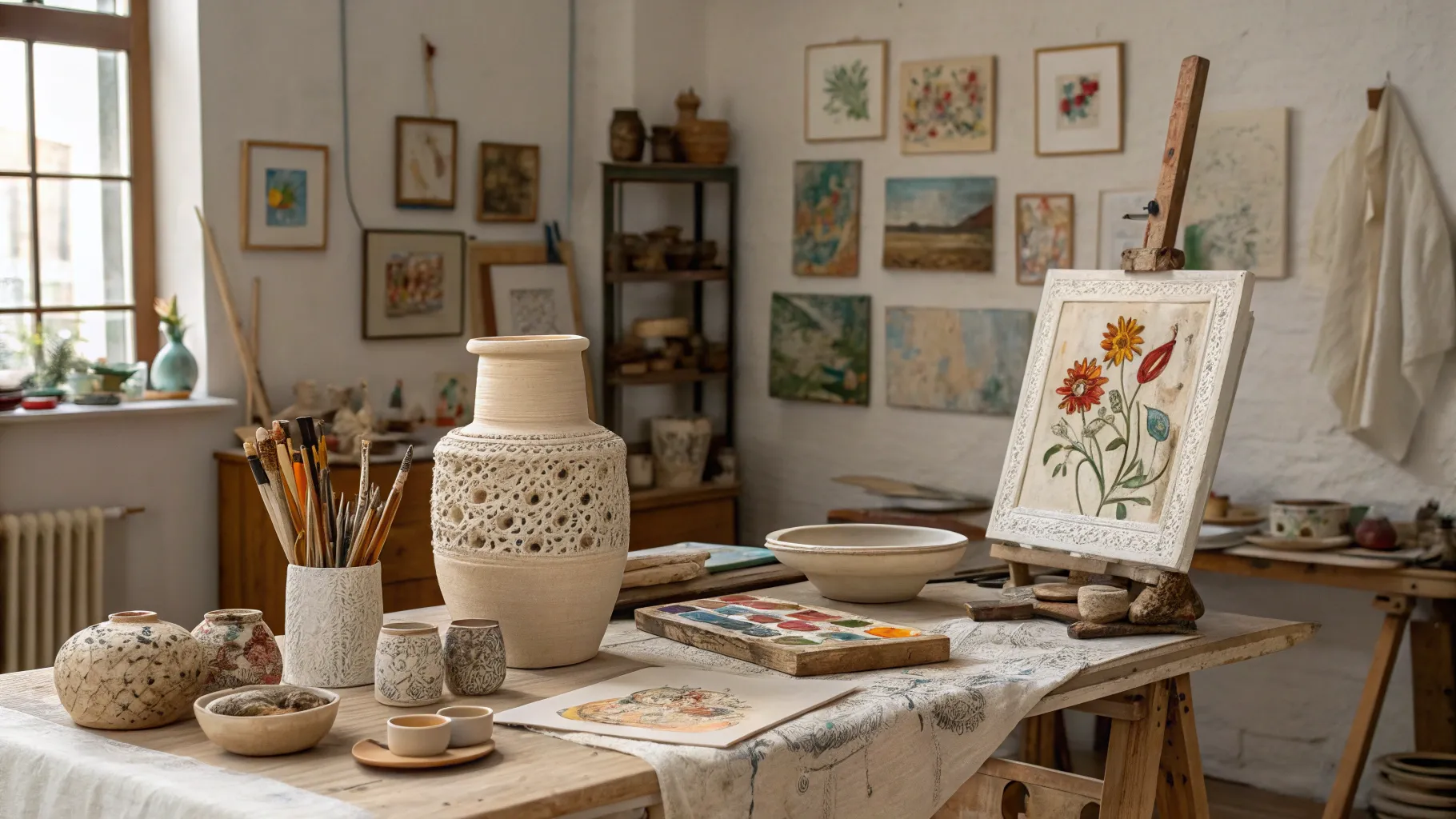Artists who merge fine art with craft traditions are rising fast, and the market is taking notice. That was the clear signal from Rebekah Bowling, who said the movement is gaining traction now. The shift is visible in galleries, fairs, and studios, where ceramics, textiles, wood, and glass appear beside painting and sculpture. Collectors are asking new questions about materials, labor, and value, pushing this hybrid approach to center stage.
Bowling’s comment captures a wider change. Makers with training in craft fields are stepping into the fine art market. Painters and sculptors are also picking up looms, kilns, and hand tools. The result is a wave of work that is tactile, historically rooted, and pointed at current social themes. It is also expanding what counts as “serious” art.
A Simple Statement With Big Consequences
“Artists blending fine art and craft are having a moment.” — Rebekah Bowling
Her view reflects a broader appetite for
material-driven work. The appetite spans price points, from emerging makers to mid-career artists. It also cuts across styles, from rough-hewn clay forms to intricate textiles. Dealers say the appeal lies in two things: visible skill and
human touch.
Artists are using traditional processes to speak to current issues. Many link fiber and clay to themes of care, domestic space, and labor. Others use the handmade surface to explore identity and heritage. The mix can feel new to buyers who came of age on screen-based art, yet it draws on long histories in craft communities.
Background: From Margins to Market
For decades, institutions placed craft in a separate lane. That line has blurred. Museum shows, academic programs, and residencies have opened doors to interdisciplinary work. Auction catalogs now mix ceramics and textiles with painting. Art fairs add sections for material-focused practices.
The shift tracks with a broader rethinking of who gets included in the art story. Many craft traditions come from communities that were overlooked. As institutions reassess their collections, they look harder at fiber, clay, and metalwork. Younger audiences, raised on making and DIY culture, are also quick to respond.
Market Signals and Studio Practice
Dealers report waitlists for artists who innovate with clay, fiber, and wood. Studio visits show longer production timelines, since many pieces require slow, exacting steps. That pace can limit supply but raise demand. Some artists collaborate with master fabricators, while others keep every step in-house to preserve touch and technique.
- Materials that lead the charge: clay, textiles, glass, and carved wood.
- Themes that resonate: home, labor, care, and cultural memory.
- Buyers look for visible process, durability, and provenance.
The home design sector has also influenced taste. Collectors comfortable investing in crafted furniture and lighting now
buy sculptural ceramics and woven wall works. The boundary between design object and artwork remains debated, but that debate fuels interest rather than dampening it.
Institutions, Equity, and Education
Museums and schools play a role in this momentum.
Expanded programs in ceramics and fiber draw new students. Curators pair craft-based works with paintings and videos, showing how ideas travel across mediums. Grants and prizes support material research and traditional techniques.
This shift also invites a wider set of makers. Communities with deep craft lineages see new recognition. When institutions present these practices alongside canonical works, they rewrite the narrative. That change carries weight for future scholarship and funding.
Skepticism and Sustainability
There are cautions. Some fear a trend cycle that could cool as quickly as it rose. Others worry that demand for intricate pieces could push artists into repetitive production. Standard concerns about durability, conservation, and display also surface, especially for textiles and organic materials.
Market stability may depend on education. Collectors who understand process and care requirements make better long-term choices. Clear documentation and conservation guidance help museums and private owners protect works over time.
What Comes Next
If the momentum holds, expect deeper collaboration across mediums. Painters may work with weavers. Sculptors may partner with glass studios. Digital tools could map patterns or forms that are then realized by hand. The hand will remain central, but the toolkit will grow.
Bowling’s observation captures a key turn in taste and values. The handmade surface, once sidelined, has moved into the spotlight. For artists, that means more paths to show and sell their work. For collectors and institutions, it means rethinking categories and care.
The next year will test how durable this shift is. Watch museum acquisitions, fair presentations, and school enrollments. If these indicators rise together, the mix of fine
art and craft will not just have a moment. It will have staying power.






